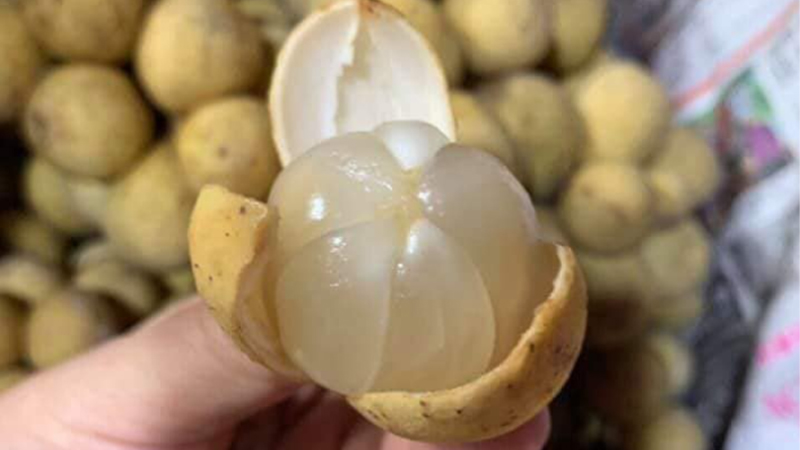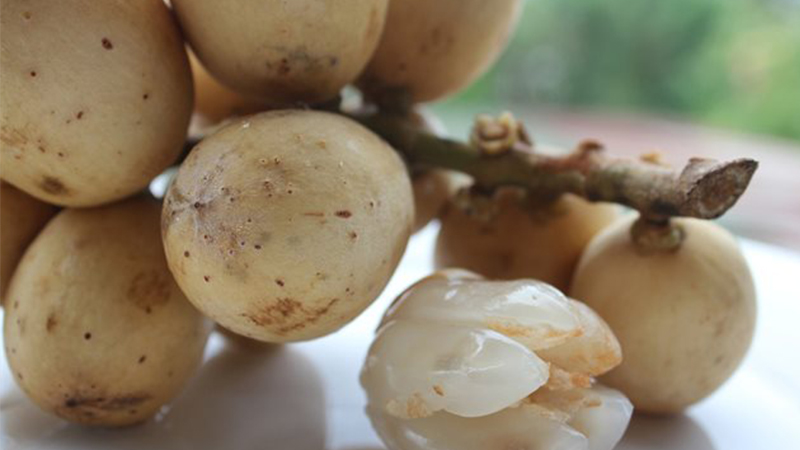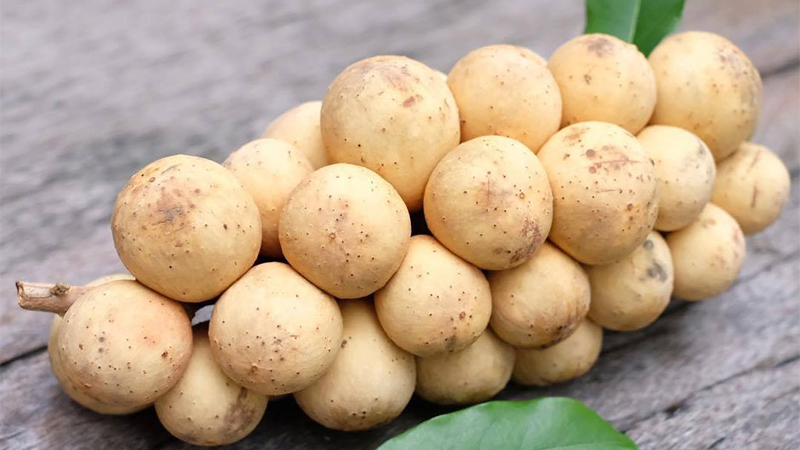Summer is approaching, and bon bon fruits are back in season and available everywhere. This delicious fruit offers numerous health benefits, but many people are hesitant to eat it due to its sticky latex. Peeling bon bons can be messy, as the latex tends to get all over your hands and is difficult to wash off.
Ms. Le Minh Hai, a bon bon enthusiast, has discovered a simple trick to peel bon bons without the hassle of latex getting on her hands. She learned this technique from a vendor and shared it on social media, intriguing many people.
1 How to Peel Bon Bons Without Getting Latex on Your Hands
Most people have the habit of peeling bon bons from the stem end. However, since this part is directly connected to the branch, it contains a lot of latex. Peeling from this end will cause the latex to drip onto your hands, making it inconvenient as you have to wash your hands repeatedly.
Ms. Le Minh Hai suggests doing the opposite. She recommends peeling the bon bon from the bottom, which is also known as the navel end of the fruit. You can use a sharp knife to pierce a small piece at the navel and then gently peel off the skin.
If you don’t have a knife, you can use your fingernails to nick the navel slightly and then peel it. According to Ms. Le Minh Hai, this method will still produce some latex, but significantly less compared to peeling from the stem.

2 How to Choose Ripe and Naturally Sweet Bon Bons, Avoiding Artificially Ripened Ones
Ms. Le Minh Hai, being a bon bon aficionado, also guides us on how to select the best bon bons that are naturally sweet and ripe, avoiding those that have been artificially ripened:
Stem
Choose bon bons with fresh, green stems. This indicates that the fruit has ripened naturally. On the other hand, stems that are dark and withered suggest that the fruit was picked prematurely and then ripened with chemicals.
 Look for bon bons with fresh, green stems
Look for bon bons with fresh, green stems
Skin
Naturally ripened bon bons will have tiny speckles at the bottom of the fruit. Artificially ripened ones, on the other hand, will have a uniform, shiny, golden-brown skin with no blemishes. When you peel an artificially ripened bon bon, you’ll find that it releases more latex than a naturally ripened one.
 Naturally ripened bon bons have tiny speckles at the bottom
Naturally ripened bon bons have tiny speckles at the bottom
Flesh
The flesh of a delicious and safe bon bon will be transparent with a sweet and sour taste. Artificially ripened bon bons, on the other hand, have a cloudy white flesh with a sour taste and are generally less flavorful.
 Safe and delicious bon bons have transparent flesh
Safe and delicious bon bons have transparent flesh
Bon bons are not only a tasty treat but also offer health benefits. Don’t let the latex deter you from enjoying this wonderful fruit. We hope that with these tips on how to peel bon bons without getting latex on your hands, you can fully savor the goodness of this fruit.
4 Types of Fish Known as “Water Ginseng”: Don’t Miss Out on Their Natural Health Benefits
The following types of fish are highly beneficial for your health as they are rich in omega 3, which is good for your heart. Don’t overlook these options.














